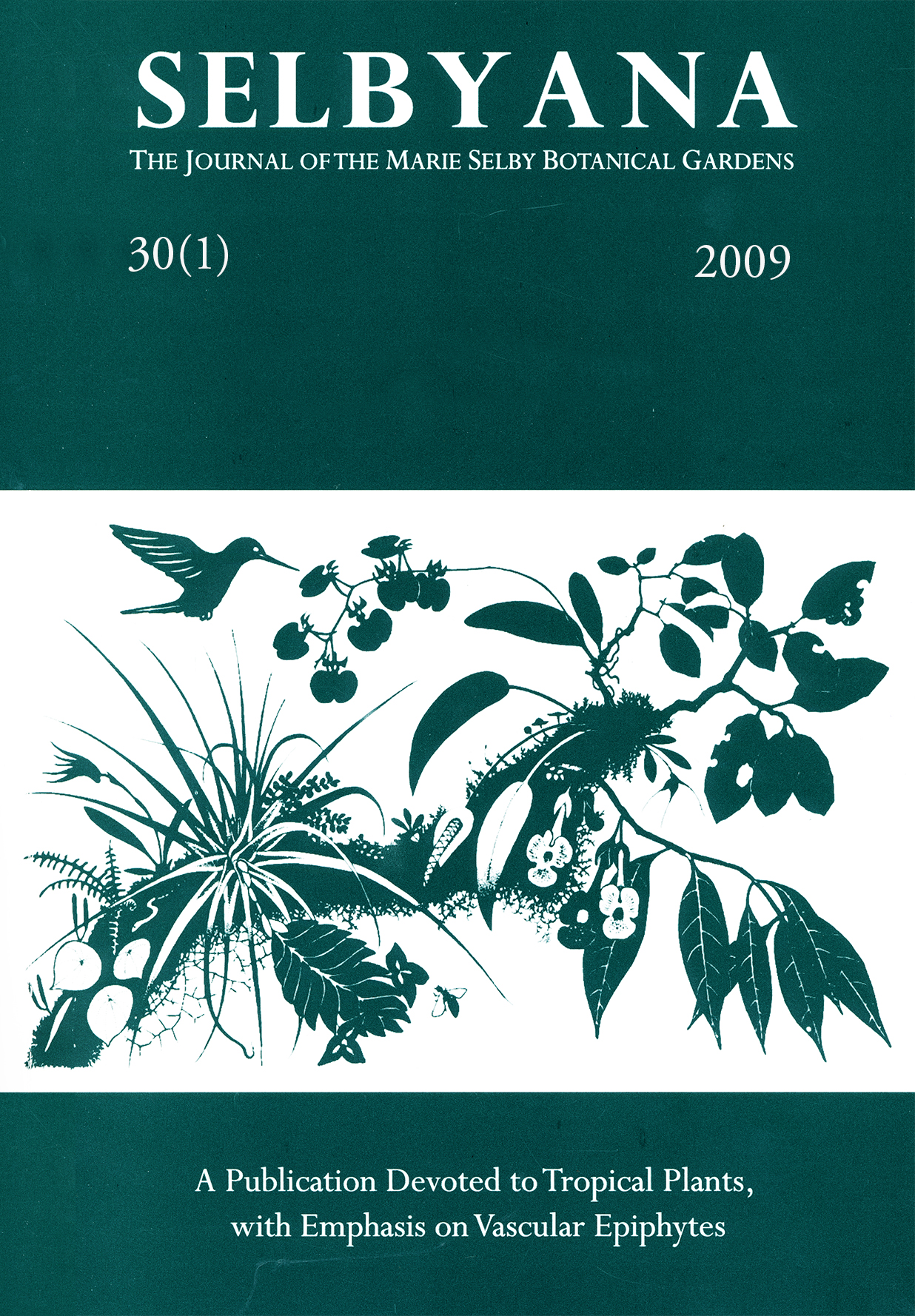Abstract
Tillandsia multicaulis is an epiphytic bromeliad found in montane forests from Panama to Mexico. In Veracruz, Mexico, T. multicaulis is self-incompatible. However, in Monteverde, Costa Rica, large amounts of self-pollen are transferred autonomously to the stigma before and during floral opening. I hypothesized that T. multicaulis is self-compatible and capable of autonomous self-pollination in Costa Rica, and I examined the breeding system of one popUlation in Monteverde. Fruit and seed set were high in open-, self-, and cross-pollinated treatments, and in caged, unmanipulated flowers. Flowers emasculated two days before opening did not set fruit. Therefore, T. multicaulis is self-compatible and autogamous, but not agamospermous in Monteverde. Prior selting occurs during the day before anthesis. Fruit set ranged from 22-32% in emasculation treatments performed the day before anthesis to 78% among flowers emasculated within one hour after floral opening. Although plants in Monteverde offer pollen and nectar rewards and are visited by pollen-collecting bees and hummingbirds, past pollen limitation has likely driven the evolution of self-compatibility. The current potential for fruit set via autonomous self-pollination is high, thus populations may be predominantly inbred. However, mixed mating could be maintained if outcrossed pollen is prepotent or if post-fertilization mortality is higher among inbred offspring.
Open Access and Copyright Notice
Selbyana is committed to real and immediate open access for academic work. All of Selbyana's articles and reviews are free to access immediately upon publication. There are no author charges (APCs) prior to publication, and no charges for readers to download articles and reviews for their own scholarly use. To facilitate this, Selbyana depends on the financial backing of the Marie Selby Botanical Gardens, the hard work and dedication of its editorial team and advisory board, and the continuing support of its network of peer reviewers and partner institutions.
Authors are free to choose which open license they would like to use for their work. Our default license is the Creative Commons Attribution-NonCommercial 4.0 (CC BY-NC 4.0). While Selbyana’s articles can be copied by anyone for noncommercial purposes if proper credit is given, all materials are published under an open-access license with authors retaining full and permanent ownership of their work. The author grants Selbyana a perpetual, non-exclusive right to publish the work and to include it in other aggregations and indexes to achieve broader impact and visibility.
Authors are responsible for and required to ascertain that they are in possession of image rights for any and all photographs, illustrations, and figures included in their work or to obtain publication or reproduction rights from the rights holders. Contents of the journal will be registered with the Directory of Open Access Journals and similar repositories. Authors are encouraged to store their work elsewhere, for instance in institutional repositories or personal websites, including commercial sites such as academia.edu, to increase circulation (see The Effects of Open Access).
